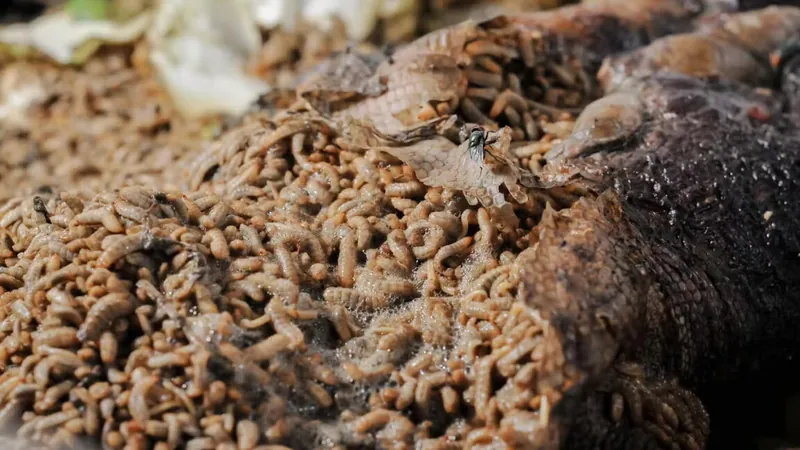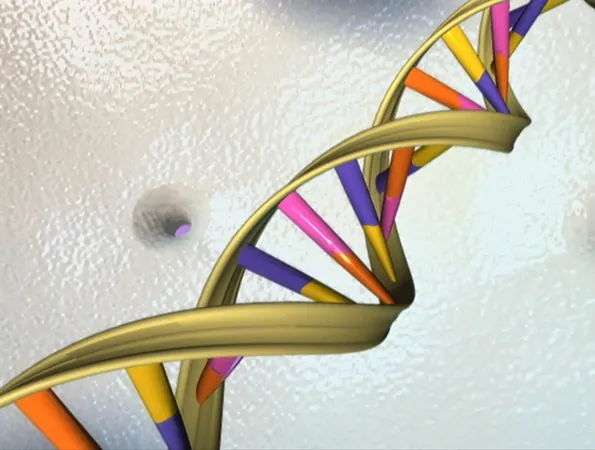
Maggots on the Menu? Unraveling the Neanderthal Diet
2025-07-28
Author: Jacob
New Insights into Neanderthal Eating Habits
For years, scientists painted Neanderthals as formidable meat enthusiasts, supposedly dining on an abundance of flesh akin to modern-day predators like lions and hyenas. But recent studies challenge this view, revealing that these ancient hominins were not as meat-centric as once presumed. In reality, Neanderthals, just like us and some of our other ancient relatives, were significantly omnivorous, incorporating a wide variety of plant-based foods into their diet.
The Protein Predator Paradox
While it's true that some cultures thrive on high-protein diets—like the Inuit who rely heavily on animal products—our hominin ancestors faced limits. Overeating protein without adequate nutrient diversity could lead to dire health consequences, historically termed 'rabbit starvation.' So, what’s behind the evidence indicating that Neanderthals devoured vast amounts of meat?
The Surprising Role of Maggots in Their Diet
Enter the researchers, including anthropologist Melanie Beasley, who suggest that maggots may hold the key. Examining bone samples through the lens of isotopes, they uncovered a potential twist in the Neanderthal diet: fly larvae, or maggots, could be the secret ingredient that elevated their nitrogen levels. Isotopes reveal clues about diets, showing how creatures higher up the food chain accumulate nitrogen-15, suggesting Neanderthals might have fared similarly.
Maggots: A Nutritional Treasure
Maggots, often seen as a nuisance, are actually chock-full of nutrients and an easy food source following the death of an animal. Beasley’s team turned to previously collected datasets, originally intended for forensic purposes, to analyze nitrogen isotope variations found in maggots consuming decaying tissue. The results were striking: maggot nitrogen values were significantly higher than those of herbivores, indicating a rich source of nutrients that could explain Neanderthal health.
Cultural Context of Decay
Aligning with an earlier hypothesis proposed by collaborator John Speth in 2017, the study suggests Neanderthals, akin to many Arctic Indigenous cultures today, may have embraced rotting meat. Many traditional societies consider decomposing animal products and even maggot-infested foods as delicacies, a perspective starkly different from that of European explorers who recoiled at the pungent smells.
Beyond Just Meat: A Diverse Diet?
Neanderthals were likely skilled in butchering, storing, and even fermenting their food, contributing to a varied palette beyond mere meat consumption. The discovery that they might consume fatty, nutrient-rich tissues alongside maggots and putrid foods offers a richer understanding of their dietary choices. This anomaly explains how they could maintain high nitrogen levels equivalent to that of hypercarnivores while including diverse food items.
Unanswered Questions Await
While the presence of maggots sheds light on the Neanderthal diet, many mysteries remain. Exactly how much of this larvae would they need to consume to elevate their nitrogen levels? What’s the impact of food storage time on nutrition? Answering these questions will enhance our understanding of how our distant relatives nourished themselves.
Conclusion: Rethinking What We Know of Our Ancestors
As researchers delve deeper into the dietary practices of our Neanderthal ancestors, we stand on the brink of shifting our perceptions about their role as hunters and foragers. By examining the complex interactions between food sources, cultural practices, and environmental adaptations, we not only enrich our knowledge of Neanderthals but also of the broader story of human evolution.









 Brasil (PT)
Brasil (PT)
 Canada (EN)
Canada (EN)
 Chile (ES)
Chile (ES)
 Česko (CS)
Česko (CS)
 대한민국 (KO)
대한민국 (KO)
 España (ES)
España (ES)
 France (FR)
France (FR)
 Hong Kong (EN)
Hong Kong (EN)
 Italia (IT)
Italia (IT)
 日本 (JA)
日本 (JA)
 Magyarország (HU)
Magyarország (HU)
 Norge (NO)
Norge (NO)
 Polska (PL)
Polska (PL)
 Schweiz (DE)
Schweiz (DE)
 Singapore (EN)
Singapore (EN)
 Sverige (SV)
Sverige (SV)
 Suomi (FI)
Suomi (FI)
 Türkiye (TR)
Türkiye (TR)
 الإمارات العربية المتحدة (AR)
الإمارات العربية المتحدة (AR)